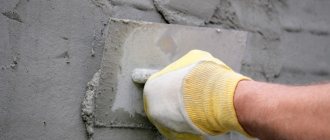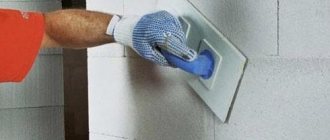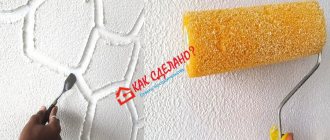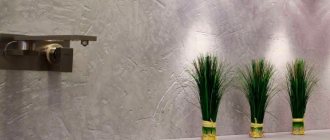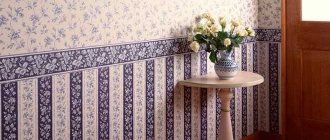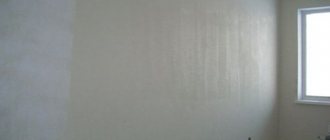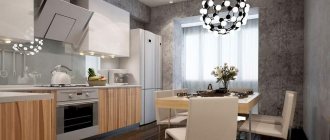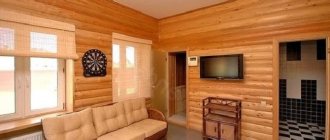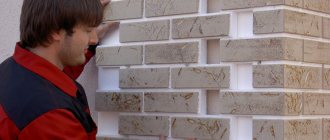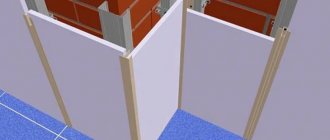Structural plaster is a universal finishing material that performs two main functions. Firstly, it protects the surface of the walls from negative influences and extends their service life. Secondly, structural plaster, unlike ordinary plaster, has excellent decorative qualities. The wall surface is stylish, modern and attractive.
Plaster differs in composition, and the application technology has some features. It is noteworthy that the future texture and pattern are unique.
Types of structural plasters
Structural plaster is a solution, the main component of which can be different materials: silicone, silicate, minerals, acrylic. They give the composition different properties, this must be taken into account when choosing a product.
The plaster material can also be separated according to the place of use. This is how structural plaster for interior wall decoration stands out, as well as special plaster for exterior use. Also, solutions can create a variety of textures on the base; they are obtained thanks to filling substances that can be added to the mixture.
The resulting structure on the surface is also influenced by the method of distributing the layer over it. This feature makes it possible to choose the appropriate option for any interior.
Solutions can create a variety of textures on the base, they are obtained thanks to fillers that can be added to the mixture.
Techniques for forming structure.
The most interesting and time-consuming stage of the work. The structuring of the solution is carried out until the mixture can be processed, so you need to act as quickly and efficiently as possible, because the mistakes made will be difficult to correct. The structure is given by any of the following tools, it all depends on the target pattern:
- large or small spatula;
- trowel;
- special rollers;
- brush with large, stiff bristles;
- wooden or plastic graters;
- improvised items.
Important point: It is important to practice applying the structure to the mixture before taking important steps. This will avoid mistakes, and a trained hand will create the same pattern over the entire surface.
The tool path along the surface will correspond to the resulting relief. Waves, smooth strokes or clear parallel lines - it all depends on imagination and skills. It is important to think in advance about what kind of pattern you want and what structure you need to achieve.
Using a grater or trowel, you can use the “tack-on” technique. In this case, light waves or peaks will be formed directed towards the separation site. It is recommended to peel off the attached tool perpendicular to the wall being processed or at an angle, sharply or smoothly.
The brushes can be scrolled in place, forming concentric circles, and the spatula can be used to make chopping translational movements, smooth lines or chaotic multidirectional ones.
The pinnacle of this art are surface drawings and three-dimensional paintings made according to the principle of stucco. This kind of work is painstaking, requiring extreme concentration on the result; a lot depends on the talent of the artist.
Properties of the structural mixture
It is not for nothing that structural decorative plaster is being chosen by an increasing number of professionals and ordinary consumers; its popularity is associated with its positive characteristics; experts highlight the following properties of the finishing material:
- Strength property;
- Can cover minor defects on the wall;
- Does not emit an unpleasant odor;
- Withstands ultraviolet radiation, which is important for façade treatment;
- Moisture resistance;
- Wear resistance;
- Plastic structure;
- Resistance to mold and fungi;
- Lets air through;
- Surface care is simple; aggressive cleaning agents can be used;
- Long service life.
Withstands ultraviolet radiation, which is important for façade treatment.
Advantages of textured plaster
By using this mixture in interior decoration, you get a number of advantages:
- The ability to quickly and without unnecessary consumables cover a wall;
- Solidity of the coating, in contrast to a wall covered with wallpaper;
- Hiding irregularities and defects on panels;
- Durability and strength of the finished coating;
Plaster options
- The ability to repaint walls many times without performing a major overhaul (by changing the color of the walls, you can completely change the design of the room);
- The wall under a layer of plaster does not rot, insects do not grow in it;
- The ability to simply care for the walls (wash and forget).
However, textured plaster also has its disadvantages. These include:
- Cost of building mixtures;
- Sometimes careful preparation of the base is required before applying plaster;
- The appearance of cracks on the wall in houses that are located in seismic zones or in apartments/newly built houses. In the latter case, the building shrinks and this can cause the plaster to crack.
In addition, for wet rooms it is better to take special moisture-resistant compounds rather than ordinary ones. Then the water will not be scary for the walls.
Scope of application
Structural plaster can be applied to various types of substrates; according to this characteristic, it is a universal composition. For indoor work, it is chosen to finish a wall made of brick, wood, metal, concrete, plasterboard sheets and others.
It can be applied not only to the wall, but also to the ceiling covering, for facade decoration. Popular use for corridors, hallways, living rooms and halls.
It is not advisable to choose a material to cover the surface in rooms with high humidity, or to apply it in humid weather.
Structural plaster can be applied to various types of substrates; according to this characteristic, it is a universal composition.
Coloring
To paint the surface, you can use two options:
- Immediately select a material with a specific color.
- Purchase white plaster and then apply paint.
The first option is more suitable for highly qualified craftsmen and practical experience. The prepared mass is poured into a special container. Next, a roller is dipped into the tray, the required amount of dye is taken, squeezed out on the ribbed area and applied to the wall. If painting is done with a paint brush, then you can do without a tray.
The second option is much easier to implement. After application and complete drying, the white composition is given the selected tone. The first layer is applied evenly. The following actions are aimed at emphasizing the relief.
Coloring the resulting texture is possible through the use of the following techniques:
- covering the surface with a brush, roller or sponge;
- playing with light areas using sandpaper;
- painting with small brushes;
- two-tone coloring. On a plain wall, paint 1-2 shades lighter/darker is applied with a brush, thereby creating contrast.
For the latter method, bronze, gold and silver shades are often used. Craftsmen apply paint with brushes or fur mittens.
The final stage is covering the walls with a protective layer of varnish or wax. The fixing contents are distributed with a sponge or brush.
Which is better: mineral, acrylic or silicone
The constituent components influence the resulting formulation characteristics, and different formulations must be selected for different applications to distribute the material. Therefore, it is important to understand the purposes of types of plaster solutions. Then it will be easier to get the required quality result.
The constituent components influence the resulting formulation characteristics, and different formulations must be selected for different applications to distribute the material.
Mineral
For the production of this type, Portland cement and lime are used; these components are harmless and do not emit a strong odor. They are sold in dry form; to obtain a solution before use, add the required amount of water according to the instructions. The following advantages of plaster can be highlighted:
- High vapor permeability;
- Non-flammable material;
- Reasonable cost;
- Does not contribute to the formation of mold and fungal deposits.
But there are also negative aspects: they are difficult to use, cannot withstand mechanical loads, and only last 10 years.
For the production of this type, Portland cement and lime are used; these components are harmless and do not emit a strong odor.
Acrylic
Acrylic is the main element in this type of plaster; among the advantages of the composition, the following points stand out:
- Resistance to mechanical loads;
- There is no need to treat the base with a primer solution before application;
- Elastic property, simplifies the distribution process;
- Harmlessness.
The disadvantages are a low level of resistance to sunlight, attracts dust, service life reaches 15 years.
It is not necessary to treat the base with a primer solution before application.
Silicone
From the name it becomes clear that a silicone base is used, which has the following advantages for surface treatment:
- High strength characteristics;
- High level of vapor permeability;
- Resistance to moisture and ultraviolet radiation;
- Durable, can last up to 25 years.
The downside is that applying the composition is expensive. During application, the solution emits an unpleasant odor. Requires a fast pace of work from the master, as it dries quickly.
Resistance to moisture and ultraviolet radiation.
Characteristics
- Structural plaster is resistant to mechanical, ultraviolet and chemical influences.
- Due to its hydrophobic properties it can be used for interior and facade work.
- Virtually waste-free and easy to apply.
- Adhesive to concrete, brick, gas block, wood.
- Eco-friendly, does not emit harmful substances when burning.
Specifications:
- withstands 50 freezing cycles (grade F50);
- loses up to 7% compressive strength, which is 18% lower than permissible;
- the freshly prepared mixture has low mobility (P2, Pk3);
- does not separate during mixing and application;
- water holding capacity - from 99%;
- compressive strength of the solution - 52 MPa;
- has an average density (1615 kg/m3);
- adhesion strength to the base - 0.36 MPa;
- vapor permeability coefficient - 0.2 mg/m h Pa;
- fire safety class - non-flammable;
- operating temperature - from -50 to +70 degrees.
Structural plaster:
- waterproof;
- without smell;
- plastic;
- not susceptible to mold or mildew.
Used at temperatures from +5 to +35 degrees. Dries within 3–14 hours. Service life - 20 years. Sold dry and ready-made in containers of 15, 20 and 30 kg.
Important
Technical characteristics of the composition depend on the type, but are always established within GOST.
Advantages and disadvantages of use
Before choosing any material, you should study the positive and negative sides in advance in order to understand whether the option is suitable for certain operating conditions. Among the advantages of structural plaster are the following:
- Does not allow water to pass through;
- Easy to care for coating;
- Withstands temperature changes;
- Plastic and elastic property;
- Reasonable cost;
- Obtaining different effects such as bark beetle, fur coat, etc.;
- It does not require careful leveling of the wall, due to its ability to cover minor flaws.
But the material also has disadvantages:
- It is difficult to remove the layer if necessary; making the base even after treatment will be more difficult;
- Does not withstand sunlight well.
It does not require careful leveling of the wall, due to its ability to cover minor flaws.
Surface preparation
Structural plaster can only be applied to a carefully leveled surface. If necessary, level the walls with Rotband with preliminary installation of metal beacons.
For 10 sq. m of wall area will need 5-6 profiles. Minor defects are eliminated with starting putty and sickle. The mesh is necessary to level out significant depressions with a difference of 2–3 cm.
Before doing this, remove the old finish:
- the paint is cleaned off with a spatula or grinder; less often an acid wash or heating with a hair dryer is needed;
- lime and gypsum plasters are moistened with vinegar solution, then knocked down with a chisel;
- the wallpaper is moistened with water or an acidic composition or treated with steam, then removed with a spatula;
- deep holes are filled with starting putty, then you need to drown the serpyanka and cover it with a second layer;
- small cracks are filled with a layer of starting putty, making cross-shaped movements;
- after complete drying or applying a leveling layer, treat the surface with two layers of primer;
- Concrete walls are covered with concrete contact.
If signs of mold or mildew are detected, add an antiseptic to the primer. It is important to allow a drying period when applying two coats of primer. If the walls are very uneven, have a construction crew sand the base. Before starting work, mix the plaster with a construction mixer until lumps and paste-like consistency are eliminated.
Attention
It is important not to pour the dry mixture with water, but gradually pour it into the container, stirring constantly. For tinting, only dry pigments are used.
Composition of structural type plaster
Obtaining positive characteristics after using structural plaster is achieved due to the presence of certain constituent elements; the base, as mentioned earlier, can be minerals, silicone or acrylic. To obtain textures on the surface, the following substances can be added:
- Granite or marble chips;
- Wood or textile fiber;
- Sand of fine or coarse fraction;
- Cellulose;
- Foil;
- Small particles of mica, perlite, quartz.
How much plaster will be spent per square meter of wall depends on what particles of materials will be used. The average is 1-3 kg/sq. m.
Obtaining positive characteristics after using structural plaster is achieved due to the presence of certain constituent elements.
Types: photos with names
Structural plaster is widely used for exterior and interior decoration. To work with facade walls, it is better to select mixtures with a coarse-grained texture; they look more advantageous over large areas and from afar. The material must be resistant to changes in weather, humidity, precipitation and exposure to sunlight. Polymer plasters and cement-sand mortar meet these requirements.
Plaster mixtures for interiors are thinner in structure, contain small inclusions, and are applied in thin layers. Gypsum plaster is also suitable for interior work.
Expert opinion
Marina Zanina
Interior designer
Depending on the area of application, the texture is also chosen: the same “lamb” or “fur coat” will look good on the street, but are unlikely to be suitable for creating a cozy interior in a room - walls covered with such methods turn out to be very rough.
Let's look at the main types:
- Bark beetle The material contains pebbles measuring 1.5-3 mm. After application, small grooves remain on the wall, like on the surface of a tree eaten away by a bark beetle. It looks like this:
On the facade
In the interior
External walls
In yellow
- Fur coat. The simplest structural plaster; cement is often used as the basis for this mixture. As a result of processing, the wall turns out to be rough, textured like pile.
- Lamb. The mortar contains stone granules, which gives the wall a pronounced grainy effect.
- Travertine. Decorative mortar to imitate natural stone in the classic version was based on lime and marble chips. A similar structure can be created using ordinary putty or gypsum plaster.
Travertine
- Mosaic structural plaster. An excellent option for exterior decoration. Multi-colored granules of natural minerals are held together with a polymer binder. The material has good adhesion to many substrates and is applied in a thin, even layer.
- Plastering under masonry. A fairly simple and effective way to decorate walls. Often used to finish the basement of a house. The structural pattern of the stone can be different: rough or polished. Masonry joints on plaster can be formed by hand or with polyurethane stamps.
Variety of textures
Fillers are responsible for the resulting textured layer on the base. You can finish in the following ways if you use a plaster solution to treat the surface:
- Dunes or sand effect;
- Orange peel;
- Cracked or tanned type of skin;
- Fish scales;
- Various reliefs;
- Reptile skin;
- Fabric surface;
- Aged foundation;
- The stone surface is cracked, or there are different types of stones.
Fillers are responsible for the resulting textured layer on the base.
Tools
To carry out repair work on finishing walls with plaster mortar yourself, you need to prepare the necessary tools in advance. The process will require:
- Spatulas of different sizes;
- Rollers, brushes;
- Trowel;
- Sponges, rags;
- Construction level, rule;
- Container for preparing the solution;
- Masking tape;
- Mixer for mixing components.
To carry out repair work on finishing walls with plaster mortar yourself, you need to prepare the necessary tools in advance.
Technology of applying structural mixtures
If you decide to apply a layer of plaster to the surface, then the process should be carried out in stages. The repair technology consists of following these steps:
- The base is prepared, the old finish is removed, be it putty, or wallpaper, etc.;
- A primer layer is applied;
- Prepare the plaster solution according to the manufacturer's instructions;
- The solution is applied;
- Create the desired effect;
- Painting or glazing work.
Prepare the plaster solution according to the manufacturer's instructions.
What does the market offer?
At the moment, the most popular plasters on the market are the following:
- "Stone". The material is produced in Russia. With its help, you can create a surface reminiscent of natural stone, limestone, and so on. Can be applied to concrete, drywall, wood and starter plaster. The coating dries within a day, and full strength gains occur in 10-14 days, depending on air humidity.
Structural plaster "Stone" - “Bark beetle” (“Ceresit” ST 64). Marble chips are used as filler. After drying, furrows are formed on the surface, imitating the results of the activity of a bark beetle. The material can be used on external and internal surfaces. It takes 24 hours to dry and 5-7 days to gain strength.
“Bark beetle” (“Ceresit” ST 64) - "Wet silk" (WGT). This plaster, after drying, imitates the texture of fabric. For use on interior concrete or plasterboard surfaces only. Requires adding color. Good resistance to water. "Wet silk" (WGT)
- “Travertine” (“Derufa.”). After drying, this material becomes similar to limestone. It is made on the basis of acrylic resin. The main advantage is a large margin of safety. Dries in 9 hours, gains strength in 3 days.
"Travertine" ("Derufa") - "Encausto Fiorentino". This is a representative of the so-called Venetian plasters. After drying, it imitates the color and texture of marble. Can be used on all types of internal and external surfaces. It dries quite quickly - in about 2-3 hours, and after just a day you can touch it.
"Encausto Fiorentino" - “Decor” (“AliMix”). It is made on a cement base and supplied in the form of a dry powder in paper bags. Can be used for interior and exterior decoration. It sets in 2-3 hours, dries in a day.
"Decor" ("AliMix") - “Alpina Strukturpulz K15 Lamb” (“Alpina”). Area of application: external and internal surfaces of concrete and brick. Can be applied over old paint.
"Alpina Strukturpulz K15 Lamb" ("Alpina")
Plastering with structural mortars is a simple procedure that you can do yourself, saving on the services of specialists. The main thing is to follow the instructions above and the recommendations of the manufacturers.
Basic application techniques
The method of applying the solution determines what texture will be obtained; in order to obtain the effects of a fur coat, the technique of spraying the composition or working with a trowel is used. The size of the filler also affects the result; using a brush or comb you can get different patterns; for this, work is done in a certain direction.
You can use special textured rollers. From available materials, press a crumpled bag onto an undried layer of plaster, compressed paper, sponge, etc.
It is popular to use stencils to highlight individual surface areas. You can apply a solution of different shades to make an unusual transition, highlight textured areas, for example, use a golden color.
It is popular to use stencils to highlight individual surface areas.
Instrumentation and its forms.
In most cases, decorative plasters, including structural ones, are not applied by mechanized means.
This is done manually using trowels, spatulas, and graters. Medium and large spatulas are used. They must have a smooth polished surface to avoid disruption of the technology. They can be metal or plastic. In those rare cases when the use of mechanics is allowed, the composition is applied with a spray gun.
When preparing the solution, mix it before use. Since it has a dense structure, it must be done with a power tool. A construction mixer or a powerful electric drill with an attachment (whisk) will do.
Sometimes homemade tools can be used. It is used to create texture, so all available materials are used: brushes, plastic bottles, any objects that allow you to leave a unique imprint, a surface mark. There is no need to rely on available materials; you can create the structure yourself.
Painting
If you decide to apply paint after plastering the surface, you need to select an option that is suitable in composition. You can apply the product with brushes, roller, sponge or spray. If desired, you can use several colors or a stencil technique. After painting, a varnish material is often applied to obtain a more durable result, or the wall is glazed in 2 layers.
The shade may change after drying, so it is advisable to test the paint in advance in an inconspicuous place.
If you decide to apply paint after plastering the surface, you need to select an option that is suitable in composition.
Sequence of work
The thickness of the decorative plaster layer must correspond to the thickness of the fraction . Polymer compositions can be applied in 1 layer; in other cases, at least 2 are required.
As an example, we consider the “fur coat” finishing technology using silicone plaster and a fur roller.
Stages of work:
- Use a spatula to transfer a small amount of the composition onto the trowel;
- without scribbling, apply the plaster to the surface;
- align the tent with chaotic movements, without pressing on the trowel;
- Use a polyurethane float to rub the plaster in a circular motion;
- it is important not to press too hard on the trowel and trowel, so as not to “wash out” the filler;
- Before painting, the surface is covered with a primer in 1 layer and left until dry;
- a fur roller is lowered into the tinted composition and rolled slightly;
- rolling is carried out in a strictly horizontal or vertical position, starting from the top edge of the wall;
- as a result, the surface acquires a grainy texture;
- After drying, remove the falling out elements with a wet trowel and No. 320 sandpaper.
For tinting, you can use universal pigments or water-dispersion paints.
After adjusting the relief, the wall must be covered with a layer of natural wax . To do this, dip a foam roller into wax and roll it over the surface. Wearing fluffy mittens or taking a porous sponge, rub the composition into the surface. The protective layer dries in 12 to 24 hours.
Brief overview of popular structural plasters
One of the most popular options for structural facade coating is considered to be bark beetle. It is obtained from a composition with large fractions of filler, which are distributed over the base with a trowel. Effects like wood, fur coat, sand dunes, and travertine are also popular. Each option uses its own application technology, resulting in an unusual and beautiful design for the base.
One of the most popular options for structural facade coating is considered to be bark beetle.
Manufacturers and brands.
There are a lot of domestic and foreign-made options on the market. One of its most striking representatives is Alpina structural plaster. It is produced as a ready-made white composition, which is colored after application.
Structural plaster of the Alpina brand is one of those options that is best applied with a spray gun, saving your time. In addition, it easily withstands atmospheric fluctuations, which is why it is used for facades.
Another option is Modellierputz structural modeling plaster from the manufacturer Dufa. It is based on a latex dispersion with the addition of mineral chips, so it has a granular pasty texture. The difference from the previous version is that it can be tinted before application.
How to make your own mixture
To save money, many resort to creating their own solution. For this purpose, you need to prepare a number of materials that are easy to find. Required materials and their volumes:
- Dry putty – 6 kilograms;
- Water – two liters;
- Glue solution – 0.2 kilograms;
- Filling elements can be marble chips, pebbles, tree bark, sand, glass fractions and others.
All elements are thoroughly mixed, after which they can be applied using the chosen method.
All elements are thoroughly mixed, after which they can be applied using the chosen method.
Structural plaster mortar can be an excellent solution for finishing walls outside and inside a building. It is important to choose the correct composition for the operating conditions. Plastering is not difficult, so you can do the job yourself.
Application in interior decoration of apartments and houses
The use of the material has found wide application due to its qualities. Let us consider in detail which textures are applicable to certain premises.
Bedrooms
To decorate bedroom walls, it is recommended to use this decorative flock plaster. It goes very well with almost any room interior , making it visually more spacious and comfortable. The shape and size of filler particles simulating the texture are selected taking into account the interior of the room and its level of natural light.
Living room
Mineral Venetian plasters are used in living room interiors - such mixtures make it possible to create decorative coatings that most realistically imitate marble slabs and natural stone.
In the kitchen
In the kitchen, as well as in the bathroom, finishing is done with acrylic moisture- and steam-resistant mixtures. The color scheme and texture are selected taking into account the interior and the level of natural light in the room. So, to decorate kitchens with windows facing north or east, light textured mixtures are used . For lighter rooms, fine-grained textured plasters in dark tones are used.
The photo shows an interior using decorative plaster:
Hallway
In finishing the hallway, ordinary textured plasters of the type are used . Moreover, if these rooms have insufficient natural light, its walls are decorated with decorative mixtures of light colors.
Children's
, the simplest mineral textured plasters that do not contain additives are used to decorate the walls It is not advisable to use expensive Venetian mixtures in such rooms - when hardened, they form a smooth coating that a child can paint.
